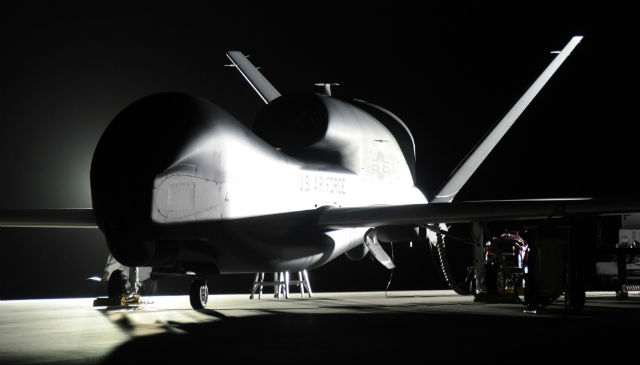The US Air Force does not intend to keep the Block 30 Northrop Grumman RQ-4B Global Hawk in service past the end of the calendar year 2014 because the Lockheed Martin U-2 and other "classified platforms" can take over its mission, senior service leaders told Congress on 17 April. However, USAF officials acknowledge that it will be hard to convince Congress to go along with their plans.
"We did not do that without carefully considering how we'd cover that mission with the U-2 and other classified platforms," says Lt Gen Charles Davis, military deputy for the office of the assistant secretary of the air force for acquisitions. Davis says further discussions on those classified capabilities would have to be conducted behind closed doors. "There are systems out there that can do this in a variety of different ways," he says.
The USAF would like to use money already appropriated for three additional Global Hawks to help buy back between three and five Lockheed F-35 production aircraft that the service expects it will have to cut later in the fiscal year 2013, Davis says. The air force also hopes to use part of the money to try to restore flying hours for portions of its operational combat aircraft fleet that it was forced to ground in recent weeks.
 |
|---|
| Northrop Grumman |
Richard Aboulafia, vice-president, analysis, at the Teal Group says a long-range stealth reconnaissance aircraft that is thought to be flying in the Nevada desert could be among the classified platforms in question.
While it is hard to say for sure, it would make sense for such a platform to have low observable characteristics and high-altitude capability, he says. Given the lack of information, it is difficult to say if such a platform is manned or unmanned, although an unmanned aircraft would have far greater endurance. It could be part of the USAF's long-range strike family of systems, which includes a new bomber, cruise missile, electronic attack capabilities and other hardware, Aboulafia says.
Lt Gen Larry James, a USAF deputy intelligence chief, declined to comment on what classified platforms might compliment the U-2 to fulfil the Global Hawk's mission, while speaking at an Air Force Association-sponsored breakfast in Washington DC on 18 April. But James did say that in future, the USAF hopes to gather and process intelligence data from "all sources", including satellites, manned and unmanned platforms for operations in an anti-access/area denial environment.
For penetrating intelligence, surveillance and reconnaissance, the USAF would rely on the Lockheed F-22 Raptor and F-35, James says. But those aircraft cannot yet download the data they gather to the intelligence analysts at the service's distributed common ground stations. "That's a desire; we don't necessarily have the money to do that right now," James says. "But we're thinking about how do you go after that."
Source: Flight International



















